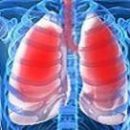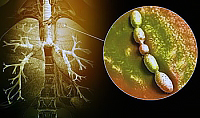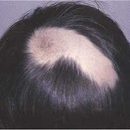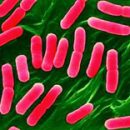Bronchiectatic disease is often begins to gradually, gradually and does not attract special attention. Meanwhile, it can cause serious complications. To avoid them, it is important to see a doctor in time. Description of the signs of the disease you will find in the article.
Content
Causes of development of bronchiectasis
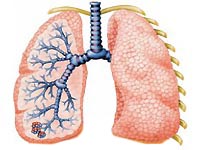
The development of bronchiectasis contributes to the following factors:
- Change the elasticity of the bronchi wall
- Burning the lumen of bronchi tumor, purulent plug, foreign body
- Increased pressure inside the bronchi (with a long cough)
Symptoms of bronchiectatic disease
For bronchiectatic disease, a perennial course with periodic exacerbations is characterized. For many years, only cough with gradually increasing number of sputum can disturb patients. At the same time, the periods of relative well-being are replaced by periods of exacerbations, during which the body temperature increases, a significant amount of sputum is distinguished (from 50 to 200-500 ml and more). The sputum of the mucous-purulent or purulent, when standing in the vessel, it is divided into three layers (lower pussy, medium - transparent liquid, upper - mucus). Quite often in sputum visible streams of blood. In severe cases, pulmonary bleeding occurs.
In the period of exacerbation, frequent symptoms are chest pain, shortness of breath. Classic sign of bronchiectatic disease - fingers in the form of drum sticks and nails in the form of watch glasses. Often, these changes are accompanied by brutal pains in their hands and legs.
Development Stages of bronchiectatic disease
The manifestations of bronchiectatic disease depends on the stage of its development. Three stages of development of the disease are distinguished:
- In the first stage there is a non-permanent cough with mucous-purulent sputum, occasionally arise exacerbations that resemble pneumonia
- In the second stage, bronchiectase is caught up; Permanent cough appears with the release of purulent sputum from 100 to 200 ml per day. Sometimes blood streaks appear in sputum
- In the third stage, the disease becomes very heavy. In fact, the lungs gradually collapse. The amount of purulent sputum released increases to 500-600 ml per day; There are frequent hemopes, pulmonary bleeding. During this period, the disease affects other organs: the heart, liver, brain, severe complications are developing
It is important not to bring the disease to the launched stage and turn to the doctor in time.

